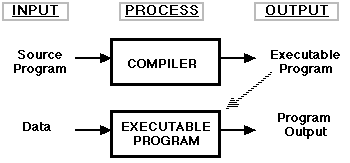
Compiler Overview
Compilers vs. Interpreters

Compiler Compilers
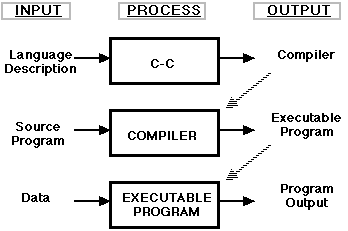
Using a compiler compiler, such as LEX/YACC to create a compiler from a language description.
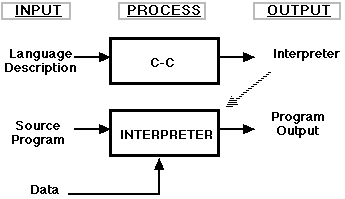
A compiler compiler system may also be used to create an interpreter.
Bootstrapping

A compiler is characterized by three languages:
Notation: ![]() represents a compiler for Source
represents a compiler for Source ![]() , Target
, Target ![]() ,
implemented in
,
implemented in ![]() . The T-diagram shown above is also used to
depict the same compiler.
. The T-diagram shown above is also used to
depict the same compiler.
To create a new language, L, for machine A:


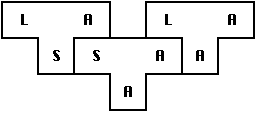
The process illustrated by the T-diagrams is called bootstrapping and can be summarized by the equation:
To produce a compiler for a different machine B:
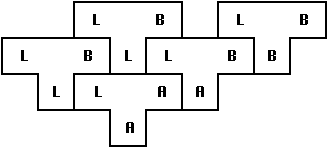
Figure 1.5. Language Processing System (Aho[2])
Compiler Phases
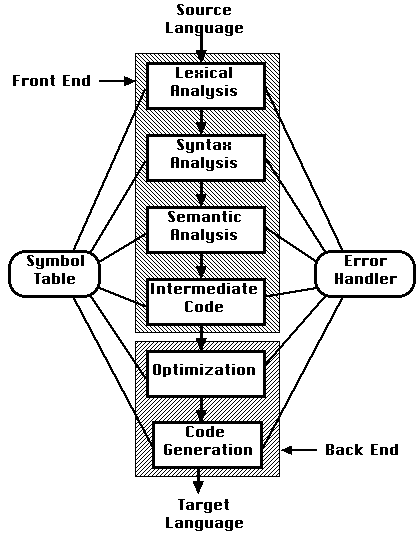
Figure 1.7. Translation Example [ALSU]
Figure 1.7. Translation of Assignment Statement
Syntax-directed Translation
Figure 2.1. Code Example [ALSU]
{
int i; int j; float[100] a; float v; float x;
while ( true ) {
do i = i+1; while ( a[i] < v );
do j = j-1; while ( a[j] > v );
if ( i >= j ) break;
x = a[i]; a[i] = a[j]; a[j] = x;
}
}
Figure 2.2. Intermediate code for code example [ALSU]
1: i = i + 1 2: t1 = a [ i ] 3: if t1 < v goto 1 4: j = j - 1 5: t2 = a [ j ] 6: if t2 > v goto 4 7: ifFalse i >= j goto 9 8: goto 14 9: x = a [ i ] 10: t3 = a [ j ] 11 a [ i ] = t3 12: a [ j ] = x 13: goto 1 14:
Figure 2.10: SDD for infix to postfix translator [ALSU].
Figure 2.9: Annotated parse tree [ALSU].
Figure 2.35: Postfix translator specification [ASU].
Figure 2.38: Translation scheme with left-recursion removed [ASU].
Figure 2.21: Evaluation of attributes [ASU].
Figure 2.37: Token descriptions [ASU].
Figure 2.36: Postfix translator organization [ASU].
Postfix translator source code [ASU]